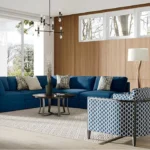Housemagnet
Designing Sustainable Multi-Housing Developments
Sustainability is a critical consideration for architects and developers when designing multi-housing developments. These types of buildings are inherently complex, and creating sustainable design solutions can be challenging. However, with the right approach and strategies, it is possible to create sustainable multi-housing developments that provide comfortable living spaces for residents while minimizing their environmental impact. In this article, we will discuss some key design considerations for sustainable multi-housing developments.1. Location and Site Planning
The location and site planning of multi-housing developments are crucial to their sustainability. The site should be selected carefully to minimize its impact on the surrounding environment, and the development should be designed to maximize energy efficiency and minimize waste. One key consideration is access to public transportation, which can reduce residents’ reliance on cars and decrease greenhouse gas emissions. Additionally, incorporating green spaces into the development can provide numerous environmental benefits, including reducing stormwater runoff, improving air quality, and providing habitat for local wildlife.2. Energy Efficiency
Energy efficiency is another critical consideration in designing sustainable multi-housing developments. Passive design strategies such as orienting the building to maximize solar gain and natural ventilation can reduce the building’s energy needs. Additionally, incorporating energy-efficient building systems and appliances can further reduce energy consumption and lower utility costs for residents. Renewable energy sources such as solar panels can also be incorporated into the design to further reduce the building’s carbon footprint.3. Water Conservation
Water conservation is also an essential consideration for sustainable multi-housing developments. Strategies such as using low-flow fixtures, collecting and reusing rainwater, and incorporating drought-tolerant landscaping can significantly reduce the building’s water consumption. Additionally, greywater systems can be incorporated to treat and reuse wastewater, further reducing water consumption and minimizing the building’s impact on local water resources.4. Materials and Resources
The selection of building materials and resources is another critical consideration in designing sustainable multi-housing developments. Using recycled and locally sourced materials can reduce the building’s environmental impact and support local economies. Additionally, incorporating waste reduction strategies such as using prefabricated building components can reduce construction waste and improve construction efficiency.5. Indoor Environmental Quality
The indoor environmental quality of multi-housing developments is also critical to their sustainability. Strategies such as incorporating natural ventilation, using low-VOC materials, and providing access to natural light can improve residents’ comfort and health. Additionally, incorporating green spaces and biophilic design elements can further enhance indoor environmental quality by providing opportunities for connection with nature.Conclusion
Sustainable design is critical to the future of multi-housing developments. By incorporating strategies to minimize environmental impact and maximize energy efficiency, architects and developers can create sustainable buildings that provide comfortable and healthy living spaces for residents. By considering location and site planning, energy efficiency, water conservation, materials and resources, and indoor environmental quality, architects and developers can design sustainable multi-housing developments that contribute to a more sustainable future.Joseph Artault
Joseph has a Master’s in Hotel Management from Tours, France. An architecture enthusiast, he changed career and studied sustainable architecture at the Auroville Earth Institute near Pondicherry.


